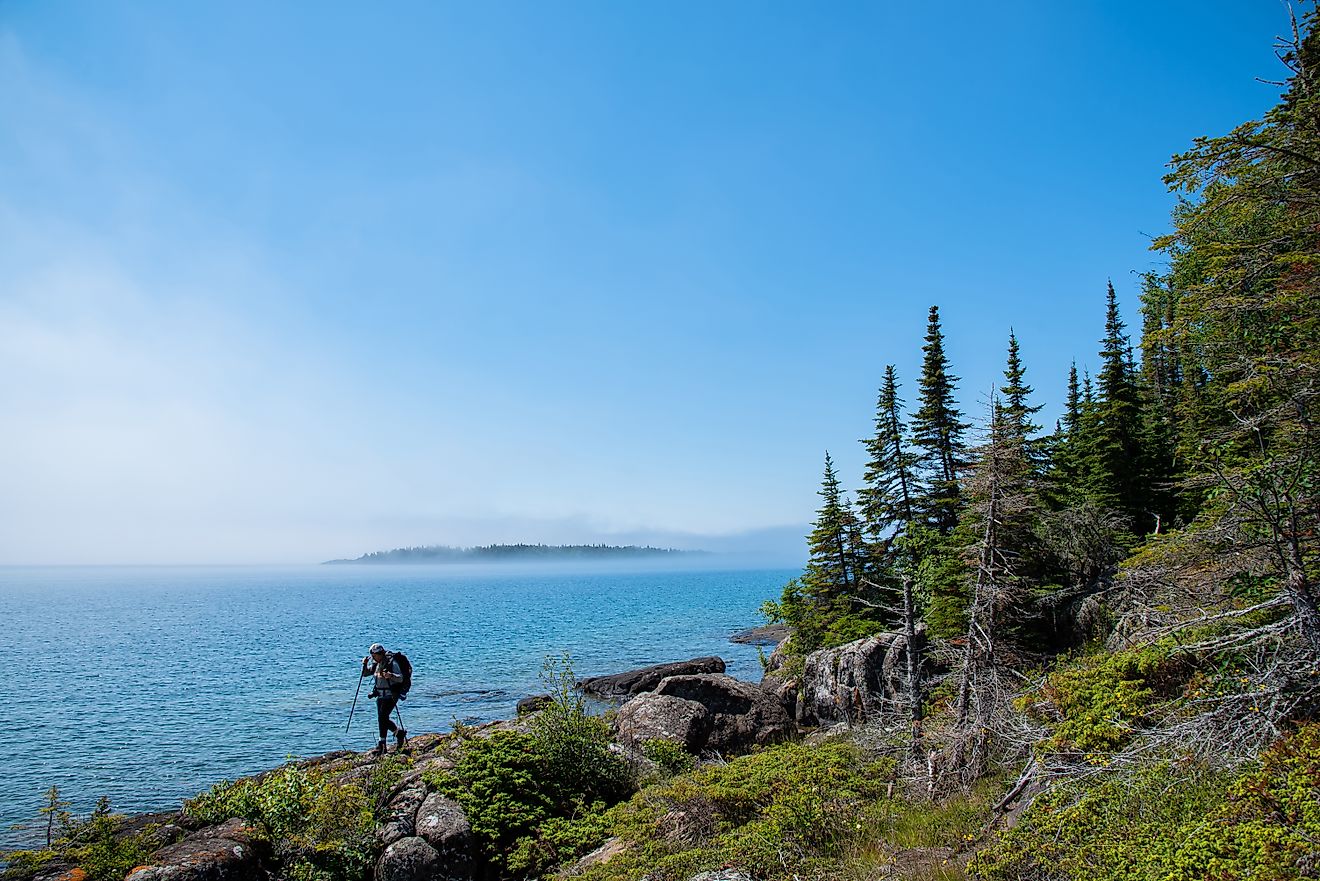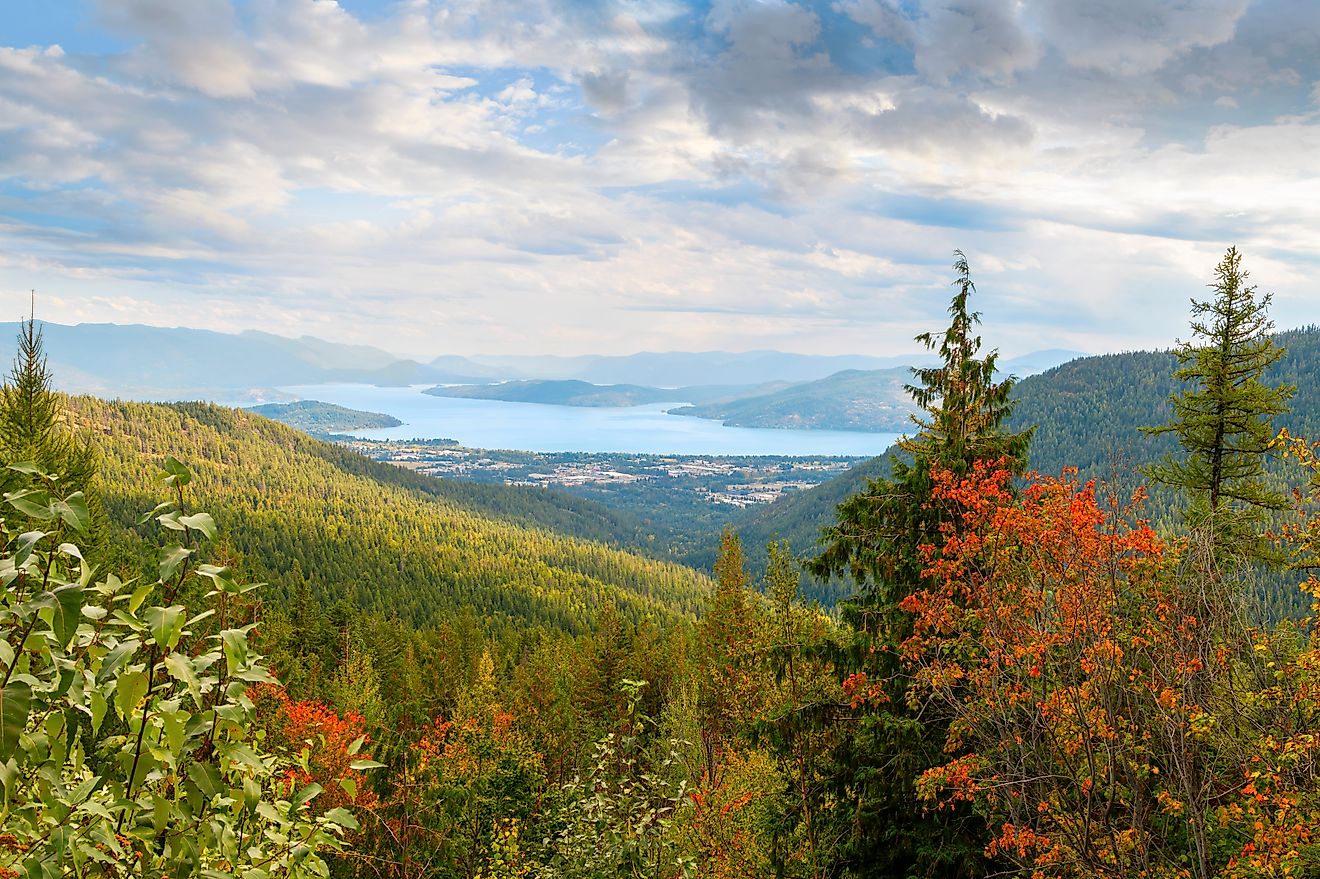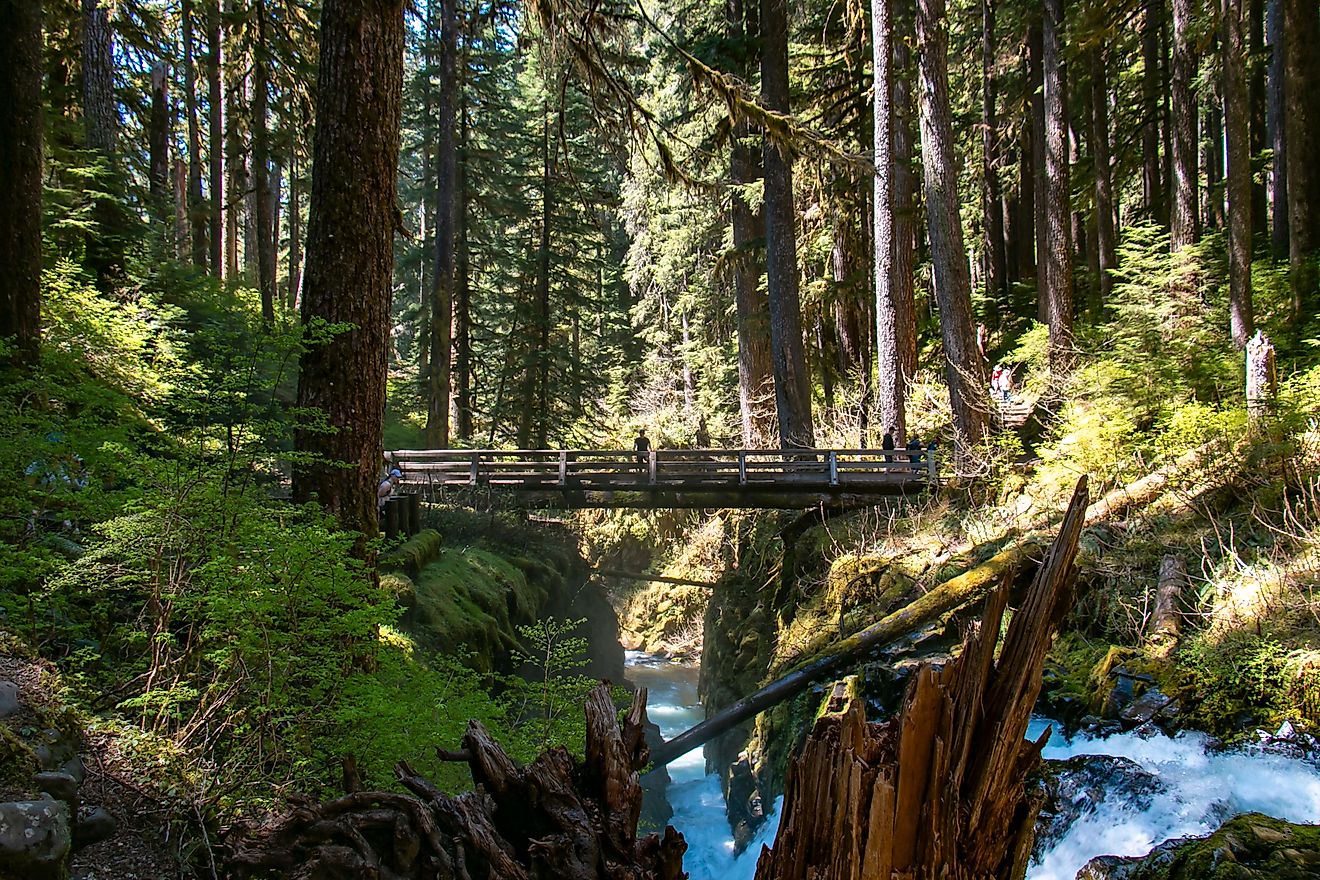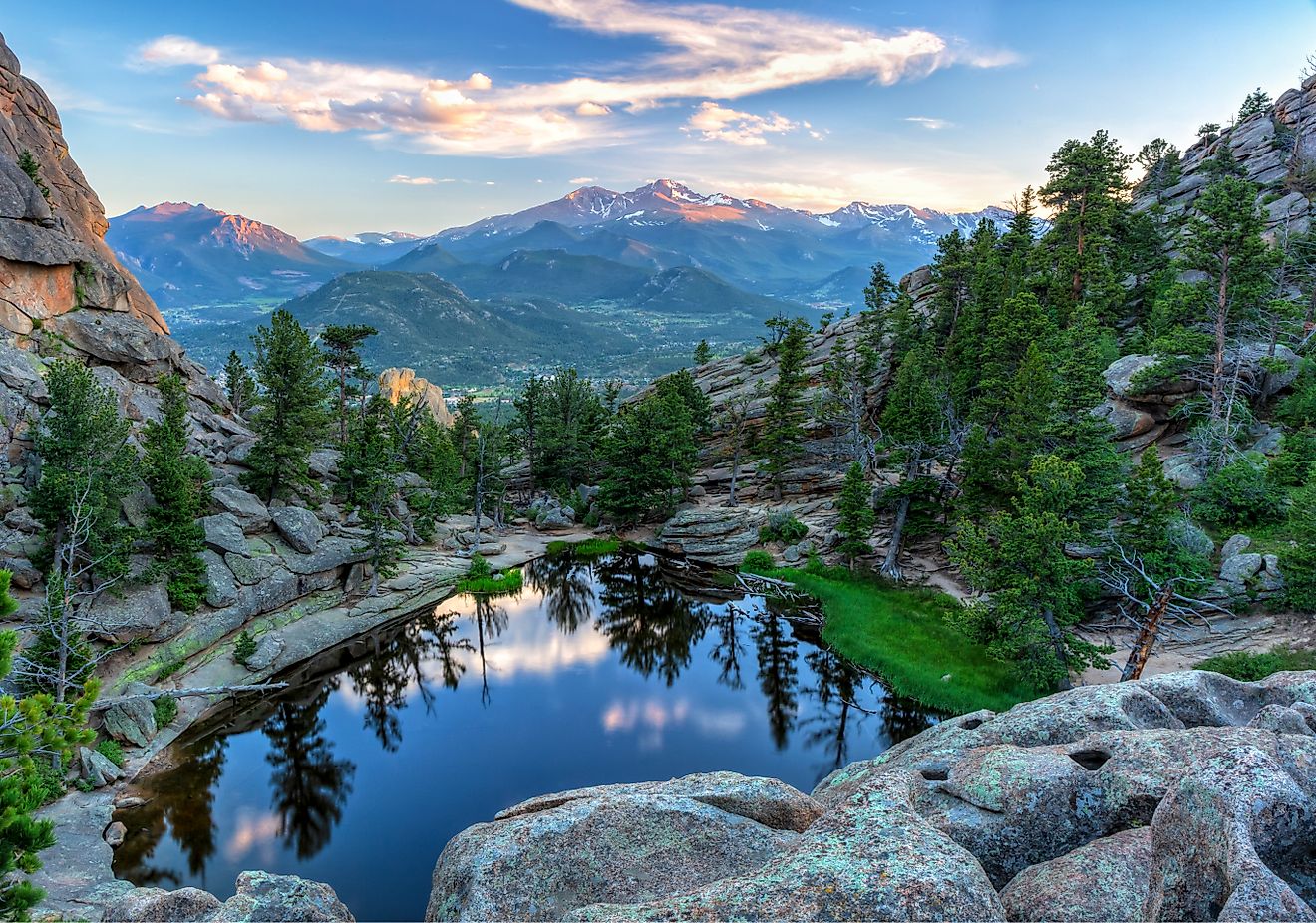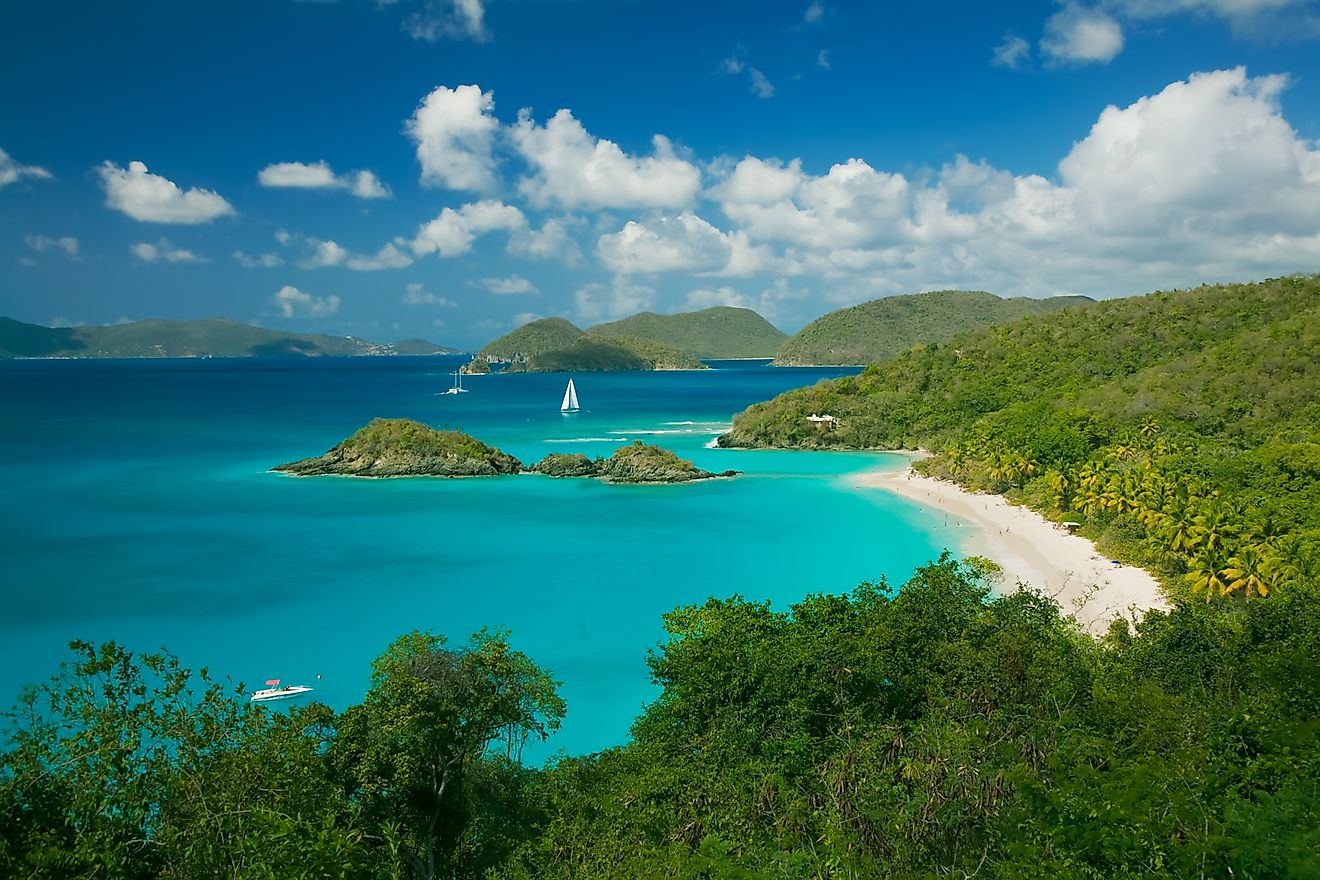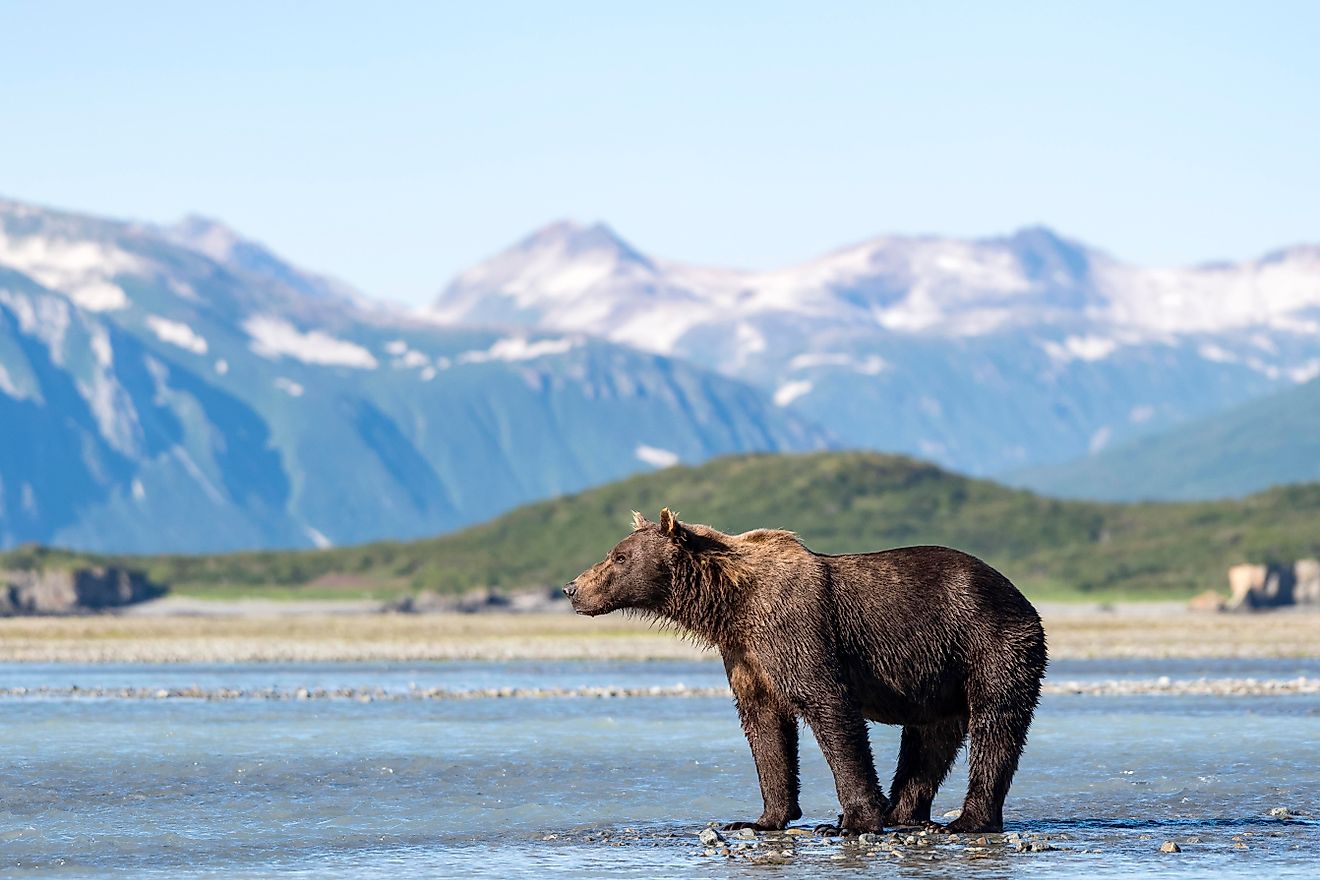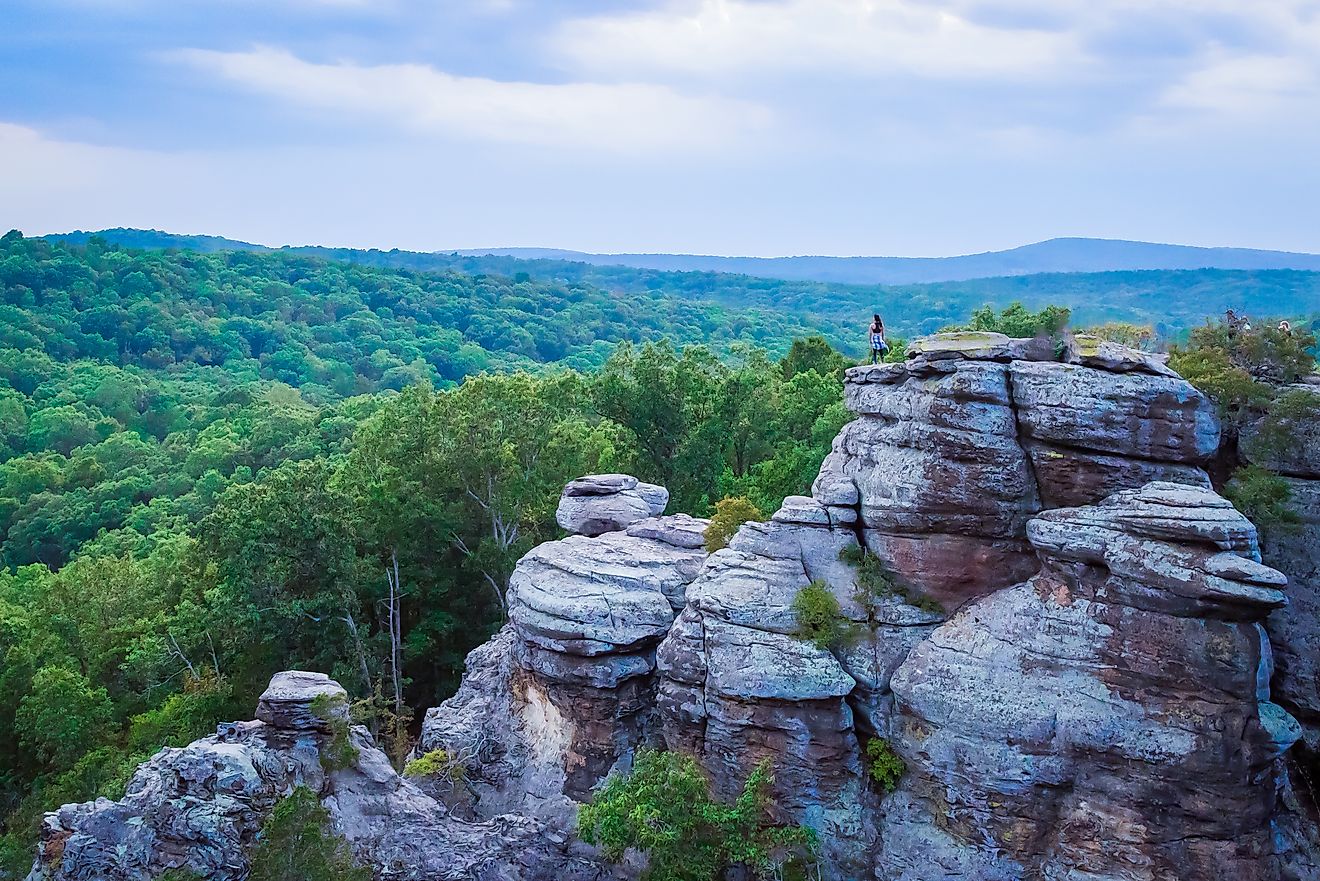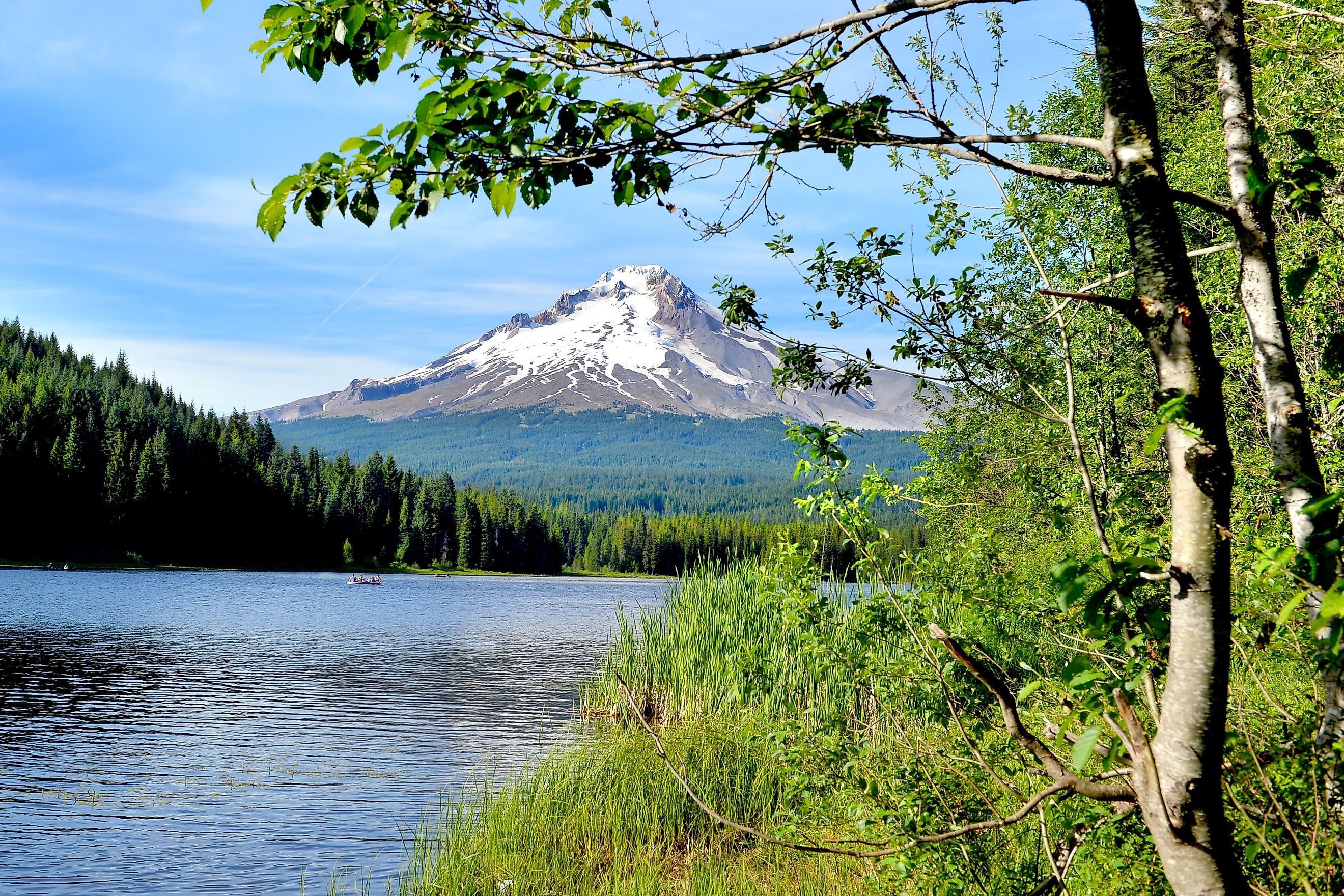
Mount Hood National Forest
Mount Hood rises on the horizon like a perfect snowcapped pyramid, a landmark that Oregonians never tire of pointing out. Just 62 miles east of Portland, Mount Hood National Forest is the backyard wilderness for millions of people, yet it feels vast and wild enough to be an adventure destination all on its own. Covering more than 1.1 million acres, the forest stretches from the Columbia River Gorge southward across rugged mountains, pristine lakes, and river valleys, reaching all the way to the Olallie Scenic Area near Mount Jefferson.
It is one of the most visited national forests in the United States, drawing more than 4 million visitors every year. People come for skiing in the winter, hiking in the summer, camping beside alpine lakes, and simply soaking in the views of Oregon’s tallest mountain, which towers at 11,125 feet. Whether you are a first-time visitor or a lifelong Oregonian, Mount Hood National Forest always offers something new to discover.
A Forest Shaped by History
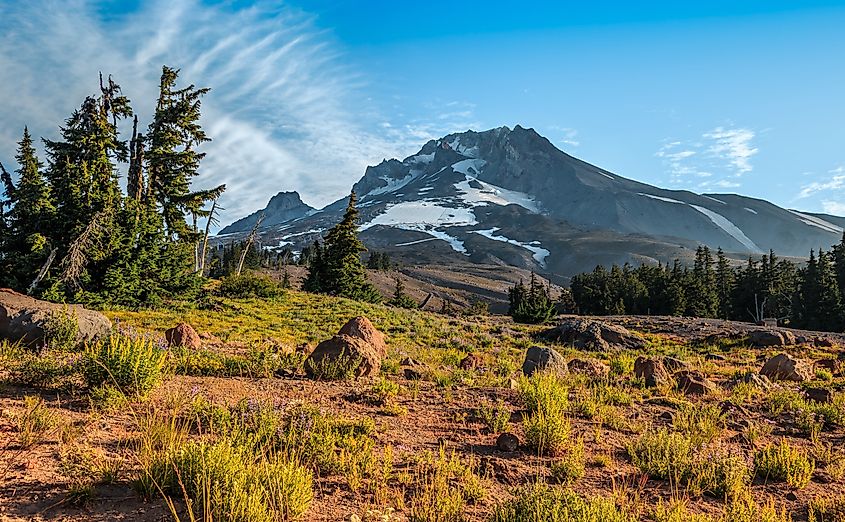
The story of Mount Hood National Forest begins in 1892, when the federal government first established the Bull Run Forest Reserve. This land later merged with part of the Cascade National Forest in 1908 and became known as the Oregon National Forest. In 1924, the name officially changed to Mount Hood National Forest, forever tying it to the iconic volcano at its center.
For a time, there was a serious effort to designate Mount Hood as a national park. Advocates argued that its unique beauty and proximity to Portland made it a natural candidate. Although that never came to pass, the push for park status helped shape protections that still define the forest today. Roughly one-third of the land is designated wilderness, protecting old-growth Douglas fir groves, alpine meadows, and fragile volcanic landscapes.
Hollywood also played a part in its legacy. The 1952 western film Bend of the River used the forest as a backdrop, showcasing its wild rivers and rugged scenery. In 2010, Mount Hood National Forest received another kind of fame when it was featured on a US quarter as part of the America the Beautiful program.
The Heart of Oregon’s Wilderness
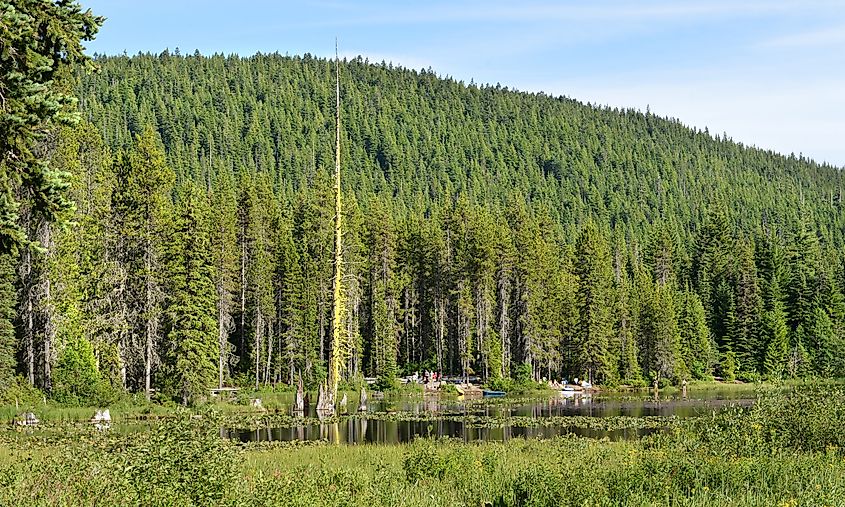
Few forests in the Pacific Northwest pack in as much variety as Mount Hood. Within its 1,067,000 acres you will find dense rain-fed woodlands, lava flows, wildflower meadows, and high-alpine snowfields. Old-growth stands cover more than 345,000 acres, giving visitors a glimpse of what Oregon looked like centuries ago.
The forest is divided into four districts: Barlow, Clackamas River, Hood River, and Zigzag. Each offers a slightly different flavor of the Pacific Northwest outdoors. The Zigzag District is closest to Portland and most popular with skiers and day hikers. The Clackamas River District has deep canyons and is rich in fishing streams. Barlow connects to the east side of Mount Hood, where drier weather and broad views create a different experience. Hood River District captures the north side of the mountain and much of the Columbia River Gorge.
Mount Hood: Oregon’s Highest Peak
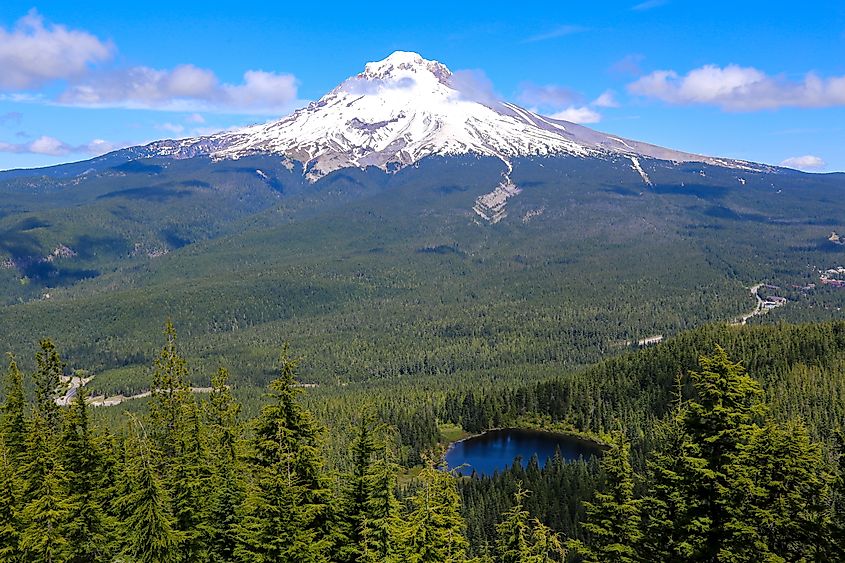
At 11,125 feet, Mount Hood is not only the tallest mountain in Oregon but also one of the most recognizable peaks in the country. It is a stratovolcano, part of the Cascade Range that also includes Mount St. Helens, Mount Adams, and Mount Rainier to the north. Climbers from around the world attempt to summit Mount Hood each year. It is considered one of the most climbed glaciated peaks in North America, although it remains a serious challenge with crevasses, avalanches, and unpredictable weather.
For those who prefer to keep their feet on solid ground, the view of the mountain from Trillium Lake or Lost Lake is often enough. These reflections of Hood in calm waters are among the most photographed scenes in the Pacific Northwest.
Recreation Highlights
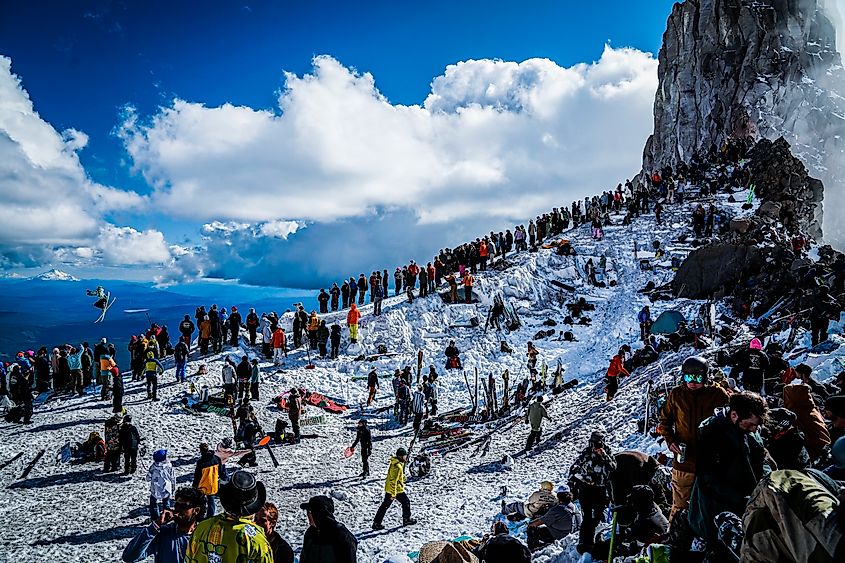
Mount Hood National Forest offers something for every type of outdoor enthusiast. With 170 developed recreation sites, it is one of the most accessible and well-loved forests in the country.
-
Timberline Lodge: Built in 1937 as part of a New Deal program, Timberline Lodge is a National Historic Landmark perched high on the mountain. Its rustic stone and wood design, handcrafted by local artisans, has made it one of the most famous ski lodges in the United States. The lodge is open year-round, offering skiing, snowboarding, and summer hiking.
-
Lakes galore: From Trillium Lake to Timothy Lake and Lost Lake, the forest is dotted with alpine waters perfect for camping, fishing, and kayaking. Trillium Lake is especially popular for families due to its easy access and unbeatable views of Mount Hood.
-
Pacific Crest Trail: This iconic long-distance route winds through the forest on its way from Mexico to Canada. Day hikers can sample portions of the trail, while thru-hikers often consider Mount Hood a highlight of their journey.
-
Historic trails: The Barlow Road, part of the Oregon Trail, cuts across the forest, allowing modern visitors to walk in the footsteps of pioneers who once braved these same landscapes.
-
Adventure sports: Mountain biking, rafting, horseback riding, and even mushroom collecting are popular activities. In winter, the ski resorts and sno-parks draw snowshoers, sledders, and skiers by the thousands.
Wilderness Areas Worth Protecting
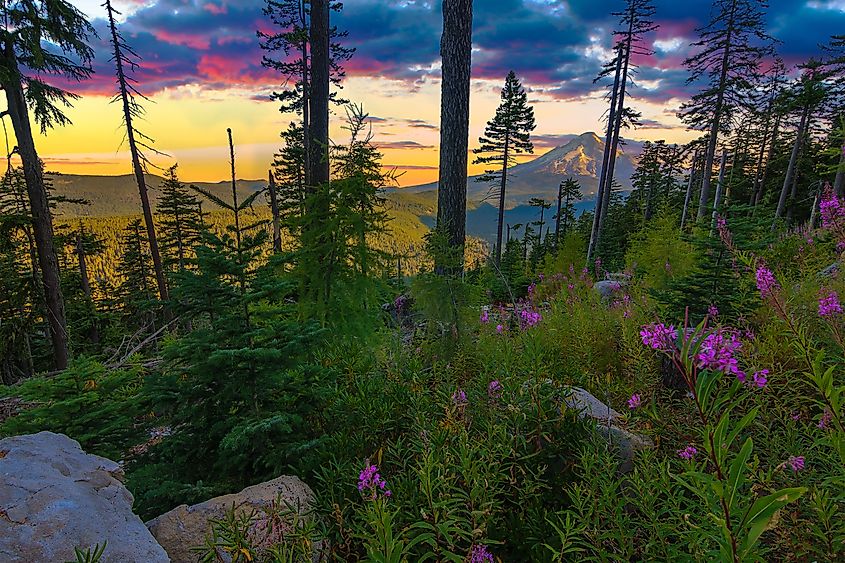
The forest contains eight federally designated wilderness areas, each offering a different kind of backcountry experience. Together, they cover more than 311,000 acres.
-
Mount Hood Wilderness includes the peak itself and the alpine slopes around it.
-
Mark O. Hatfield Wilderness stretches into the Columbia River Gorge with waterfalls and basalt cliffs.
-
Salmon-Huckleberry Wilderness protects lush valleys filled with old-growth forests and mountain streams.
-
Bull of the Woods Wilderness offers solitude in rugged backcountry terrain.
-
Badger Creek, Clackamas, Roaring River, and Lower White River Wildernesses round out the list, each with a unique mix of forest, canyon, and alpine scenery.
These wilderness areas ensure that despite the forest’s popularity, there will always be places where visitors can find peace, quiet, and the feeling of true wildness.
A Vital Resource
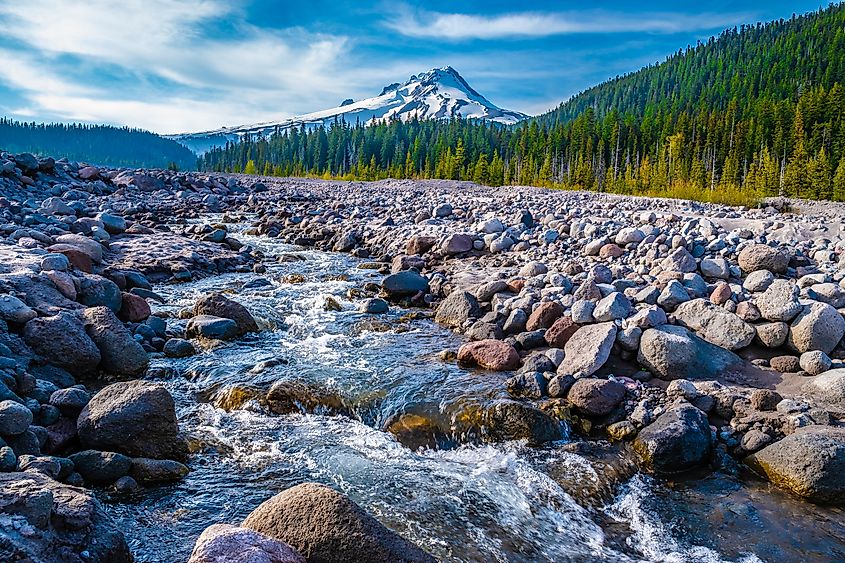
Beyond recreation, Mount Hood National Forest plays a crucial role in Oregon’s environment and economy. The forest provides about one-third of the state’s drinking and agricultural irrigation water, flowing from its rivers and snowpack. Its ecosystems support wildlife ranging from black bears to elk and salmon. The presence of old-growth forest makes it a key area for conservation efforts, as groups work to balance recreation, logging, and habitat protection.
Tips for Visiting Mount Hood National Forest
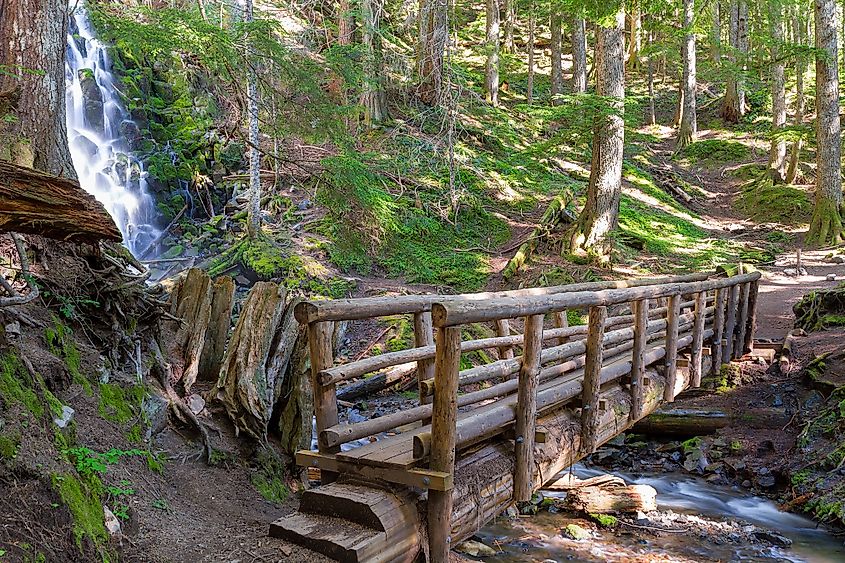
If you are planning a trip, here are some useful tips to make the most of your visit:
-
Timing is everything: Summer brings the most accessible hiking and camping, but it also means more crowds. For fewer visitors, try spring or fall. Winter is magical, but only if you are prepared for snow and icy roads.
-
Pack layers: Weather on the mountain changes quickly. Even in July, you might need a jacket.
-
Choose your base: Sandy, Government Camp, and Hood River make good jumping-off points for exploring the forest. Each offers lodging, dining, and easy access to trailheads.
-
Camping vs day trips: There are about 80 campgrounds in the forest, but reservations often fill fast. If you are not staying overnight, the many day-use areas offer beautiful spots for a picnic or a short hike.
-
Stay safe: Cell service can be spotty, so bring maps and let someone know your plans if you are heading into the backcountry.
Oregon’s Iconic Forest
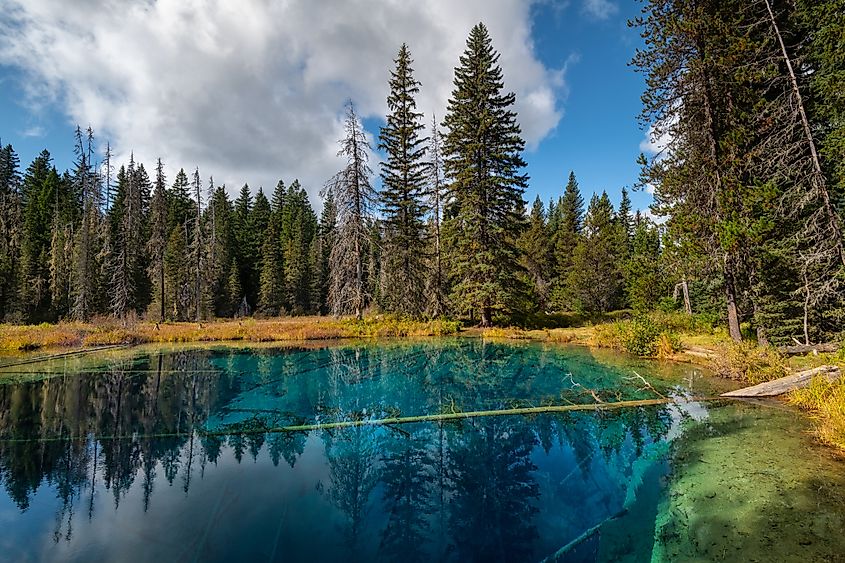
Mount Hood National Forest is more than a recreational escape. It is a cultural and environmental landmark that has shaped Oregon’s identity for over a century. From the historic Timberline Lodge to the quiet wilderness lakes and alpine trails, it offers a window into the beauty of the Pacific Northwest.
For Portland residents, it is a backyard retreat. For travelers, it is an essential stop on any Oregon itinerary. And for the millions of people who gaze up at Mount Hood’s white peak from across the state, it is a symbol of home.
Frequently Asked Questions About Mount Hood National Forest
Where is Mount Hood National Forest located?
Mount Hood National Forest lies about 62 miles east of Portland, Oregon. It stretches from the Columbia River Gorge south toward Mount Jefferson, covering over a million acres across six counties.
How tall is Mount Hood?
Mount Hood stands 11,125 feet tall, making it the highest mountain in Oregon and one of the most prominent peaks in the Cascade Range.
Can you camp in Mount Hood National Forest?
Yes. The forest has around 80 developed campgrounds along with numerous backcountry camping opportunities. Reservations are recommended during summer.
What are the most popular activities in Mount Hood National Forest?
Hiking, camping, skiing, snowboarding, fishing, rafting, mountain biking, and scenic drives are all popular. Timberline Lodge, Trillium Lake, and portions of the Pacific Crest Trail are top highlights.
Is Mount Hood safe to climb?
Mount Hood is one of the most climbed glaciated peaks in North America, but conditions can be dangerous. Climbers need technical skills, safety equipment, and awareness of avalanche and crevasse hazards.
Are there wilderness areas within the forest?
Yes. The forest has eight federally designated wilderness areas, including Mount Hood Wilderness and Salmon–Huckleberry Wilderness, covering more than 311,000 acres.
When is the best time to visit Mount Hood National Forest?
Summer and early fall are ideal for hiking, camping, and lake activities. Winter is best for skiing and snow sports, while spring offers waterfalls and wildflowers.
Do you need a pass to visit Mount Hood National Forest?
Most day-use areas require a Northwest Forest Pass or equivalent recreation pass. Sno-parks in winter also require a separate Sno-Park permit.
